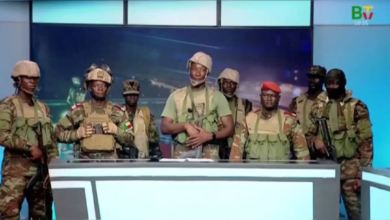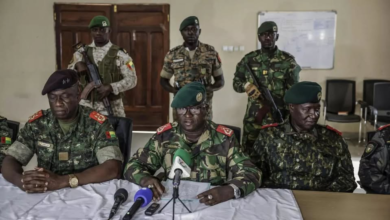From War To Peace: How Possible Is It For Afghanistan

Introduction
Sovereignty is one of the predominant factors of terrorism and jihadist tendencies around the world. Religious fundamentalism and the quest to create an Islamic Caliphate are the major reasons for global terrorism. The Taliban is a Pashtun, Islamic fundamentalist group that reigns in Afghanistan from 1996 until 2001, following the U.S. invasion, based on the stance that the regime provided refuge to al-Qaeda and Osama bin Laden. Today the Taliban control dozens of Afghan districts, after several attacks against government and civilian targets. Despite the 2020 peace agreement, which the Taliban signed with the United States, requesting for power-sharing with the Afghan government. The intra-Afghan talks, led to the reconfiguration of leadership and control, with the Taliban taking hold of Afghanistan, because of the withdrawal of U.S. troops and no respect of the peace agreement.
The birth of the Taliban
Created in the early 1990s by Afghan mujahideen, or Islamic guerilla fighters, who countered the Soviet occupation of Afghanistan (1979–89) with the protein alliance of the Central Intelligence Agency (CIA) and the Inter-Services Intelligence directorate (ISI) of Pakistan. The group emerges by integrating Pashtun youths, who studied in Pakistan. Just like any other religious squad or group, they promised stability and rule of law after four years of conflict (1992–1996) among rival mujahideen groups. The Taliban invaded Kandahar in November 1994 to pacify the crime-ridden southern city, and by September 1996 capital, Kabul was captured and the Taliban declared Afghanistan an Islamic emirate, with religious leaders of Mullah Mohammed Omar, an anti-Soviet. The Taliban governed 90 percent of the country before its 2001 overthrow.
Moreover, the Taliban leadership is based on the Pashtuns’ pre-Islamic tribal code and interpretations of sharia colored by the austere Wahhabi doctrines of the madrassas’ Saudi benefactors. The regime request women to wear the head-to-toe burqa and jailed men whose beards it deemed too short. The regime might redefine her leadership, following the increasing control over the Afghan government.
Taliban as a menace to Afghanistan democracy
In respect to the sociological aspects of a state, the Taliban is a global menace, which does not limit its activities to Afghan, but extends regionally, by making the country a hub for a terrorist organization and jihadist as well. The maintenance of regional stability is necessary for global peace and security. With the proliferation of nuclear arms, the region might encounter several security challenges, particularly from China, Pakistan, and Iran, considered as potential nuclear powers. Without isolating Russia and India, equally possessing nuclear weapons, unstable Afghanistan could cause destabilization of the region.
Taliban counterinsurgency operations with the North Atlantic Treaty Organization (NATO), and several U.S. administrations, provide no doubt that the group is a threat to peace. More than 6,000 U.S. troops and contractors and over 1,100 NATO troops, about 46,000 civilians have died, and an estimated 73,000 Afghan troops and police officers have been killed since 2007.
Despite the Taliban’s own losses, estimated to be in the tens of thousands, the group is stronger now than ever, as they control a large percentage of the country. International observers are concerned by Taliban support to terrorist organizations, particularly al-Qaeda. The Taliban rule, in Afghanistan, would provide a safe haven for terrorists who could coordinate attacks against the United States and its allies, in respective of peace agreements signed.
Peace and security in Afghanistan
The Doha Agreement 2020
From peace to war, back to peace and to war, that is the situation of Afghanistan. In the bid to restore peace in Afghanistan, the United States of America, engaged in a peace agreement with the Taliban. Part one of the agreement provides that the United States would withdraw from Afghanistan all military forces, coalition partners, including all non-diplomatic civilian personnel, private security contractors, trainers, advisors, and support staff within fourteen (14) months following the announcement of this agreement, and as well endorse several security measures.
Part two of the agreement provides that, with the announcement of this agreement, the Islamic Emirate of Afghanistan which is not recognized by the United States as a state and is known as the Taliban will adopt several security measures to prevent any group or individual, including al-Qa’ida, from using the Afghan territory for jihadist tendencies against the United States and its allies. Was this agreement in line with the Taliban’s takeover of Afghanistan? A question yet to be answered.
Joint Declaration between the Islamic Republic of Afghanistan and the United States of America
Since the events of 9/11, the U.S military machine has gone beyond policy to secure her soil and allies. For peace in Afghanistan, is peace for the U.S and its allies. Part one of the joint declaration between the Islamic Republic of Afghanistan and the United States recognize that al-Qa’ida, ISIS-K, and other international terrorist groups or jihadists continue to exploit Afghan territory to recruit members, raise funds through cryptocurrency, train flag bearers, plan and coordinate attacks against the United States, and Afghanistan. Through this mutual pact or declaration, the Islamic Republic of Afghanistan and the United States will adopt a counter-terrorism strategy to defeat al-Qaida and other international terrorist groups.
The most essential aspects are found in part three, which requests the United States to ensure the recognition and endorsement of the UN Security Council for this agreement and related arrangements. More so, the United States will also refrain from the use of force against the territorial integrity or political independence of Afghanistan as per the Westphalia Treaty of 1648.
Conclusion
In February 2020, the Trump administration change the narrative, by signing a peace agreement with the Taliban to assure talks with the Afghan government. But the ‘game’ has changed, with Biden administration which proceeded with troop withdrawal, which had to effectively begin in May 2021, if the Taliban respected her commitments, restraining from any link with terrorist groups or engage in jihadist tendencies.
However, the imbalance of the Doha agreement signed alongside the Joint Declaration between the Islamic Republic of Afghanistan and the United States in Kabul on February 29, 2020, was revealed, when the Taliban posed that, the agreement did not specify when a ceasefire should take place and would not commit to one until after a political agreement is reached. This explains Taliban’s current activities in Afghanistan undermining negotiations and reconciliation efforts tabled by the legal prescriptions (Doha agreement and Joint Declaration between the Islamic Republic of Afghanistan and the United States in Kabul).
More so, the Taliban adhere during the discussion that, they would not attack Afghan cities. But even the military-to-military channel set up in Doha between the United States and the Taliban to monitor compliance did not limit her activities. For the U.S.-Taliban agreement facilitated the withdrawal of foreign forces from Afghanistan and paved the way for the Taliban increasing conquest of Afghanistan. This validates Bill Roggio, (an editor for Long War Journal) stance on that, “peace doesn’t mean an end to the fighting, it means an end to the U.S. occupation”.
By Saron Obia




